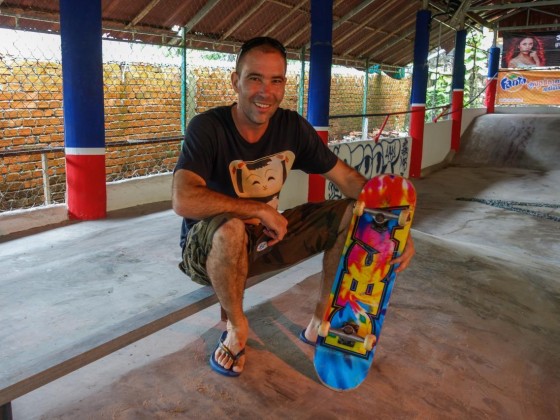By Jarryd Salem and Alesha Bradford / Nomadasaurus
Can a skate park make a difference? Mika Jones hopes so. In the hip beach town of Sihanoukville in Cambodia, the Australia native is building a specially designed skate zone that will be a community center for local Khmer kids. Dubbed Skate Style, the park is now open to the public and is already seeing kids flock to its ramps and halfpipe to practice their skills. We sat down with Jones to find out more about the story behind the facility and his plans for the future.
